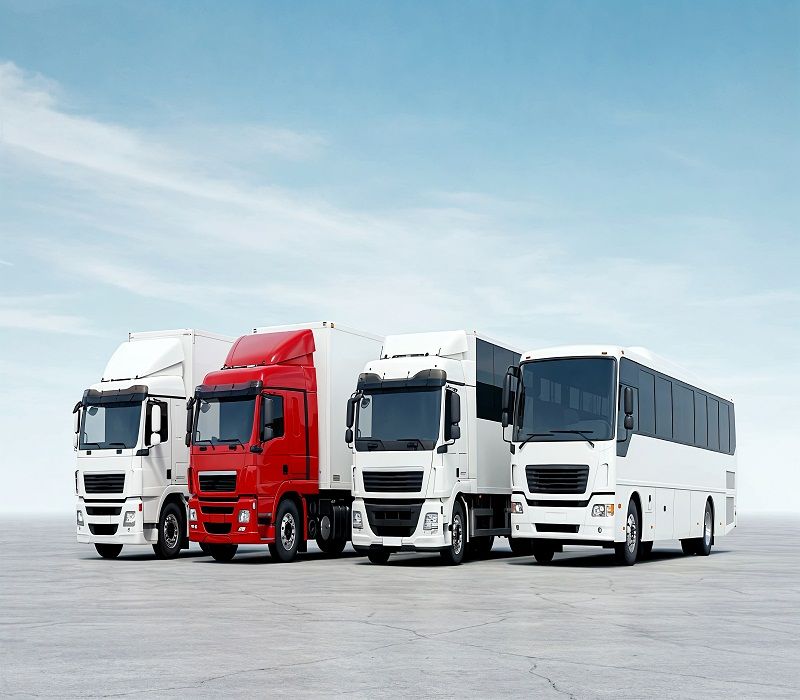Transporting large groups of people efficiently and comfortably requires careful planning. Whether it’s for corporate events, school trips, weddings, or tourism, choosing the right group transportation sizes is crucial. This guide will explore different vehicle options, seating capacities, cost factors, and tips for selecting the best transportation based on group size.
Why Group Transportation Size Matters
Selecting the appropriate vehicle size ensures:
- Comfort: Avoid overcrowding and ensure passenger comfort.
- Cost-Efficiency: Pay only for the space you need.
- Safety: Follow legal seating limits and avoid overloading.
- Convenience: Match the vehicle to pickup/drop-off locations and luggage requirements.
Now, let’s explore different group transportation sizes and their best uses.
Types of Group Transportation Vehicles Based on Size
1. Small Group Transportation (Up to 15 Passengers)
Best for: Corporate shuttles, family trips, small weddings, airport transfers
Vehicle Options:
- Sedans & SUVs (1-4 passengers) – Ideal for executives or small families.
- Minivans (6-8 passengers) – Comfortable for families or small teams.
- 12-Passenger Vans – Suitable for small group tours or employee shuttles.
Pros:
- More affordable for small groups.
- Easier to maneuver in tight spaces.
Cons:
- Limited luggage space.
- Not suitable for large gatherings.
2. Medium Group Transportation (16-35 Passengers)
Best for: Wedding parties, school trips, corporate outings, medium-sized tours
Vehicle Options:
- Minibuses (20-25 passengers) – Common for local tours and events.
- Sprinter Vans (12-20 passengers) – Luxurious option with ample legroom.
- Mid-Size Coaches (30-35 passengers) – Great for intercity travel.
Pros:
- Balances capacity and comfort.
- Often includes amenities like air conditioning and reclining seats.
Cons:
- May require special licensing for drivers.
- Parking can be challenging in crowded areas.
3. Large Group Transportation (36-60 Passengers)
Best for: Big events, sports teams, university trips, large weddings
Vehicle Options:
- Full-Size Charter Buses (50-60 passengers) – Spacious with onboard restrooms.
- Double-Decker Buses (70-80 passengers) – Ideal for city tours.
- School Buses (Up to 72 passengers) – Budget-friendly for student groups.
Pros:
- Cost-effective per person for big groups.
- Often includes storage for luggage and equipment.
Cons:
- Requires advance booking.
- Less flexibility in route changes.
4. Extra-Large Group Transportation (60+ Passengers)
Best for: Major events, conventions, festival shuttles, military transport
Vehicle Options:
- Articulated Buses (100+ passengers) – Used in high-capacity transit systems.
- Multiple Charter Buses (Scalable capacity) – Best for very large groups.
- Trains & Trams (200+ passengers) – Used in some tourist destinations.
Pros:
- Handles massive groups efficiently.
- Reduces the need for multiple vehicles.
Cons:
- High operational costs.
- Limited availability in some areas.
How to Choose the Right Group Transportation Size
1: Determine Your Exact Passenger Count
- Always confirm the number of attendees before booking.
- Consider extra space for luggage or last-minute additions.
2: Assess Travel Distance & Duration
- Short trips (under 2 hours) can use smaller vehicles.
- Long trips require comfortable seating, restrooms, and amenities.
3: Check Accessibility & Parking
- Smaller vans fit in tight urban areas.
4: Compare Costs & Amenities
- Minibuses are cheaper but lack luxury features.
- Charter buses offer WiFi, restrooms, and reclining seats.
5: Book in Advance
- Popular vehicles sell out quickly during peak seasons.
- Early reservations often come with discounts.
Cost Factors for Group Transportation
- Vehicle Type: Luxury coaches cost more than school buses.
- Distance: Longer trips increase fuel and driver expenses.
- Duration: Hourly rentals vs. fixed-rate trips.
- Seasonal Demand: Prices rise during holidays and events.
- Additional Amenities: WiFi, restrooms, and catering add costs.
Safety & Legal Considerations
- Driver Qualifications: Commercial licenses may be required.
- Insurance: Verify coverage for passengers and luggage.
- Seat Belts & Compliance: Ensure vehicles meet safety regulations.
- Overloading Risks: Never exceed manufacturer seating limits.
Conclusion
Choosing the right group transportation size improves comfort, safety, and cost-efficiency. Small groups benefit from vans and minibuses, while large events require charter buses or multiple vehicles. Always consider passenger count, travel distance, and amenities before booking.
By following this guide, you can select the best transportation option for any group size, ensuring a smooth and enjoyable journey.
FAQs About Group Transportation Sizes
1. What is the best vehicle for 20 passengers?
A minibus or sprinter van (20-25 seats) is ideal for comfort and affordability.
2. How much does a 50-passenger bus cost?
Prices range from $800-$1,500 per day, depending on distance and amenities.
3. Can I rent multiple small vehicles instead of one large bus?
Yes, but coordinating multiple drivers and routes can be complex. A single bus is often more efficient.
4. Are seat belts required in group transportation?
Laws vary by region, but modern charter buses often include seat belts for safety.
5. How far in advance should I book group transport?
At least 4-6 weeks before your event, especially during peak seasons.
6. What if my group size changes after booking?
Inform the rental company immediately—many allow adjustments with notice.
7. Do large buses have restrooms?
Most full-size charter buses include restrooms, but minibuses usually do not
For more interesting articles visit our website “wpplusonline.space”

Leave a Reply